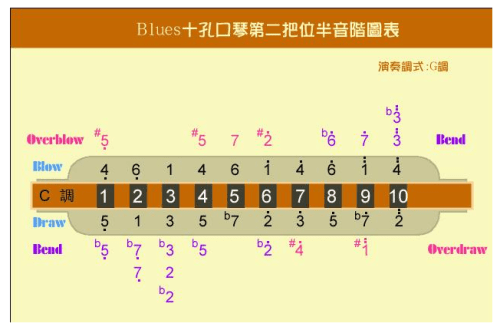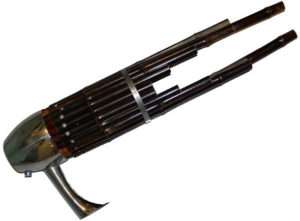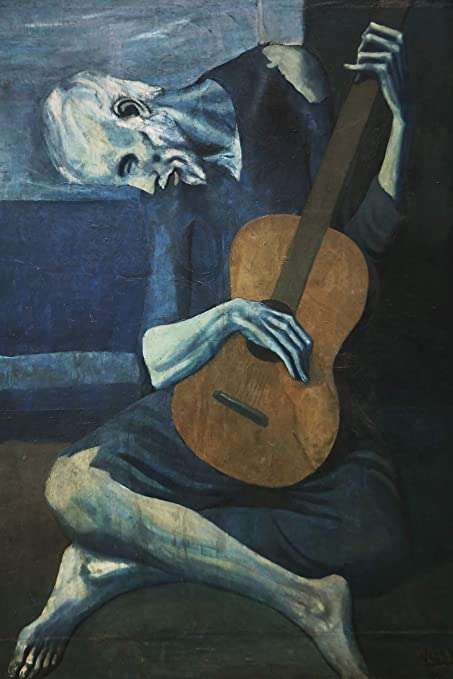
All about guitar painting
Contents
The appearance of the guitar is far from the last moment. After all, music is, after all, a show, whether we are talking about a concert of the classical repertoire or a wild rock marathon.
Therefore, painting a guitar is a process that any musician can face.
Learn more about guitar painting
Applying paint and varnish to the surface of the guitar may be required in several cases:
- The guitar is old , it fell into your hands “well used” or lay on the closet for several years. The exterior is worn, though not severely damaged. In this case, replacing the paintwork will help update the instrument.
- The guitar is in perfect working order, however, during the operation it received scratches , scuffs or potholes on the surface of the body. Only painting can eliminate these annoying appearance minuses.
- The owner wants to get away from the stereotypes of standard design . Experimenting with painting and varnishing is not only an individual result, but also an interesting process.
How to paint a guitar
Rumor has it that painting a guitar can seriously affect the sound of the instrument. To some extent, this may apply to expensive acoustic guitars, in which, depending on the state of the body, frequencies can really change slightly, overtones appear or disappear. On an electric guitar where the body is not a resonator, even the thickest layer of paint will not affect the performance of the pickups.
Therefore, paint on health, just do it carefully.
What will be required
- A set of screwdrivers and wrenches: for disassembling the guitar.
- Soldering equipment: for removing the tone block and installing it after painting.
- Primer for wood.
- Paint on wood for the main color scheme.
- Lacquer for finishing.
- Brushes or spray gun for application (not necessary if the paint is already in spray cans).
- A set of sheets of sandpaper of different degrees of graininess from coarse to “zero”.
- Rough cloth for removing excess paint, blotting and polishing.
How to choose paint and varnish
Paints and varnishes determine how durable, wear-resistant, elastic coating will be. Last but not least, the guitarist is interested in the price at which he can purchase the necessary materials.
Oils and waxes
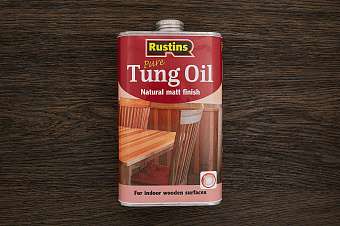 The cheapest and at the same time original way is not to paint the guitar, but simply soak it with linseed or tung oil. The oil penetrates the wood, preserving its pattern. There is no coating as such, only an oil film remains on the surface. The instrument looks like it has been polished with millions of touches. Unfortunately, all oil formulations provide minimal protection against moisture and are unable to hide mechanical defects.
The cheapest and at the same time original way is not to paint the guitar, but simply soak it with linseed or tung oil. The oil penetrates the wood, preserving its pattern. There is no coating as such, only an oil film remains on the surface. The instrument looks like it has been polished with millions of touches. Unfortunately, all oil formulations provide minimal protection against moisture and are unable to hide mechanical defects.
Alcohol varnishes and paints
They are dry formulations diluted in alcohol. The most successful for the guitar is shellac. It has a moderate cost and dries completely in a week. The mechanical strength is low, and the service life will require updating the coating after a year or two of active use.
Nitrocellulose materials
 Well known material in the market. High drying speed and good surface finish after processing. Of the minuses – a strong unpleasant odor (work in a respirator and a ventilated room), as well as the fact that nitrolacs must be applied in at least 5 layers with intermediate grinding.
Well known material in the market. High drying speed and good surface finish after processing. Of the minuses – a strong unpleasant odor (work in a respirator and a ventilated room), as well as the fact that nitrolacs must be applied in at least 5 layers with intermediate grinding.
Compositions based on polyurethane
A good option for coating the wooden parts of the body and neck . Polyurethane is more viscous and flexible, it does not crack even years after painting. In addition , the musician has a chance to choose from a large number of shades and textures. For self-painting, this is one of the best options.
Polyester varnishes
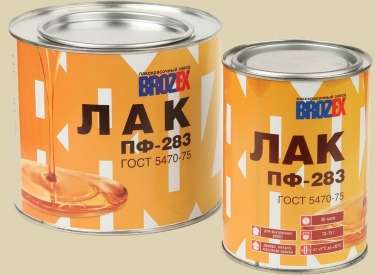 Expensive guitars cover them. The coating turns out to be elastic, durable, protects the guitar from minor mechanical damage, looks expensive and attractive. However, the composition is prepared from four to five components, which are taken in proportion to the nearest percent. The wrong proportion completely changes the properties of polyesters.
Expensive guitars cover them. The coating turns out to be elastic, durable, protects the guitar from minor mechanical damage, looks expensive and attractive. However, the composition is prepared from four to five components, which are taken in proportion to the nearest percent. The wrong proportion completely changes the properties of polyesters.
step by step algorithm
Guitar preparation
Before painting the guitar must be completely disassembled. Remove the strings, pegs , bridge , disconnect the neck . It is necessary to unscrew the belt mounts, the audio output connector and other elements from the case. The main task is to remove all the electronics. To do this, the panel is unscrewed and lifted, after which the wires are carefully soldered.
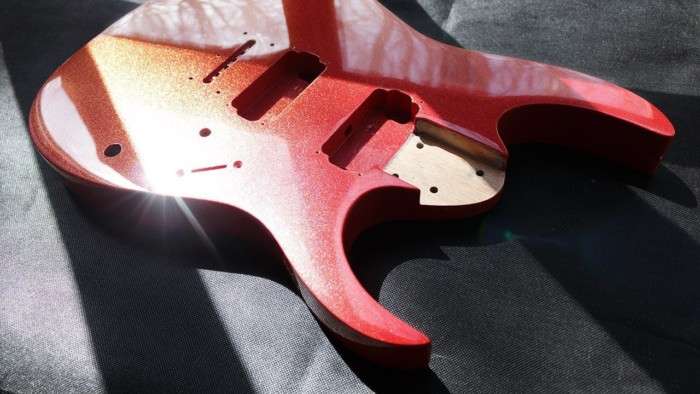
After you have only a wooden case left in your hands, the old coating is removed from it. If you have a building hair dryer, you can use it – so the paint will come off easier. We process wood with sandpaper – first large, then medium, and finally zero. After brushing off the dust, the guitar is sanded “wet” again and dried.
Fretboard painting
The peg mechanism is removed from the neck, the fingerboard is removed, and the anchor is removed . Grind as described above. After that, the neck must be hung up to evenly paint on all sides. To do this, you need to find a wire with a hook or screw in a small screw where the hole from it will not be noticeable. After that, using a spray gun or from a spray can, a layer of paint is evenly applied. The drying time of the layer is a day, after which it can be covered with the next layer. Lacquer goes on top of the paint.
Deck painting
The deck can be hung by the screws screwed into the holes where the neck was removed . You can paint not only with a spray gun or spray can, but also with a brush. In order for the paint to lay down evenly, after it has set, the surface is grouted. This not only smooths out the bumps from the brush, but also improves the adhesion of the next applied layer.
Final drying should be a week.
Logo application
If you want to make your guitar unique with a logo, lettering or pattern, there are two ways to go:
- Make a stencil and apply the logo with contrasting paint with a spray can or brush.
- Attach a thin sticker, which is then hidden with several layers of clear varnish.
The varnish will protect the logo from abrasion and scratches.
If you entrust the work to professionals
Guitar repair companies provide stripping and painting services. Usually the price is calculated as the amount for painting the neck , body, polishing and preparatory work. The total amount can vary from 7 to 25 thousand rubles.
Conclusion
Sometimes painting a guitar is the only way to salvage a good instrument that has lost its appeal. With this procedure, you can not only improve and protect the guitar, but also make it unique.



